Photo albums and antique scrapbooks are both priceless and fragile. They bring the past to the present with items like old photos, newspaper clippings, and locks of hair. Albums tell us about the people who made them and the world they lived in.
But a lot of these books and their contents wear out over time. Colors fade, pages tear, and bindings fall apart. Proper storage and handling can add years to their shelf life, but these solutions aren’t permanent.
We’ll explain the importance of preserving photo albums and scrapbooks based on two of their key features:
- The Rewards – Social, personal, and historical value
- The Risks – Harmful materials, handling, and conditions
- The Resources – Four ways to preserve and enjoy these books for years to come
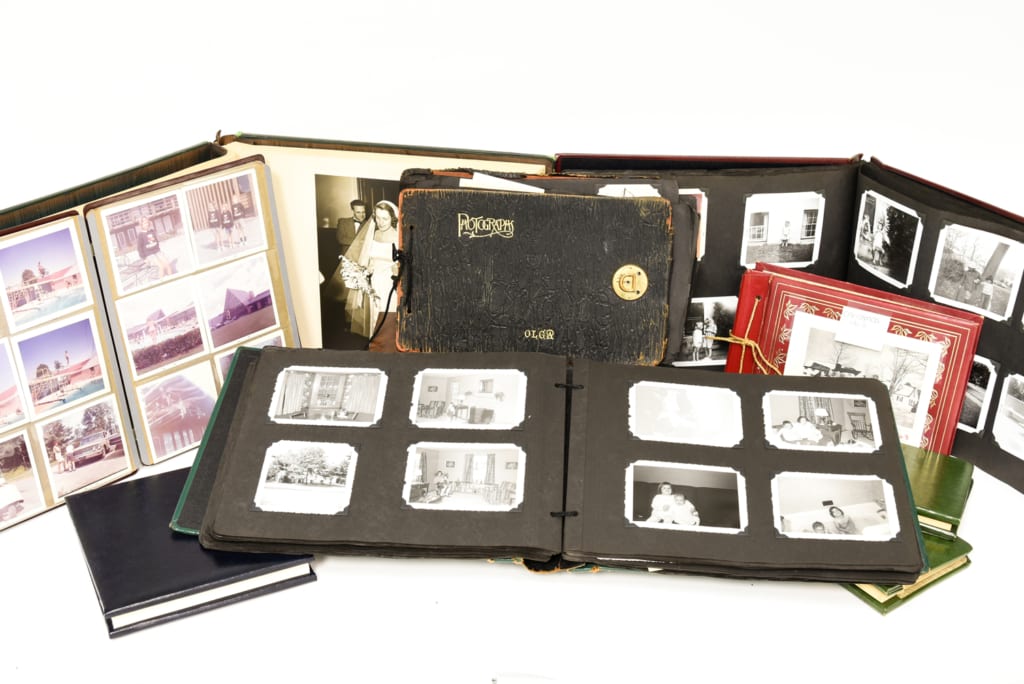
Common Album & Scrapbook Formats
Scrapbook and photo album formats have a lot of similarities, but they’re so popular that they come in a variety of sizes and materials. Let’s split them into a few distinct categories:
- Sleeved albums – plastic pages with transparent sleeves where photos are inserted
- Magnetic albums – also called ‘Sticky’ albums; photos are attached to pages covered with adhesive, then a plastic sheet protector folds over the entire page
- Vintage Scrapbooks – a classic scrapbook with sheets of black paper, to which photos and clippings are attached with photo corners and captions are written; sometimes bound with yarn or string laced through the spine
- Modern scrapbooks – the same concept as vintage scrapbooks, but more diversity in sizes and materials
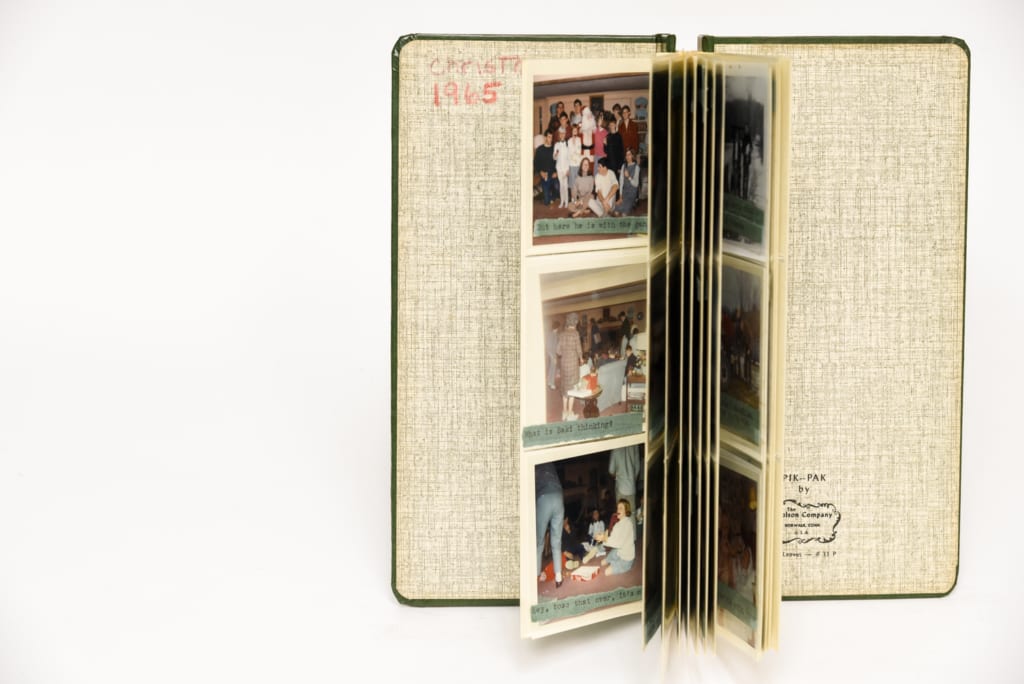 A sleeved album with handmade captions
A sleeved album with handmade captions
Albums and Scrapbooks are Priceless
The value of an album or scrapbook is greater than the sum of its parts. Each one is a unique collection of items that might seem disconnected but come together to tell a story.
The word ‘album’ comes from ancient Greek and Roman times when public announcements were carved on stone tablets. Since then, albums and scrapbooks have become a way for people to preserve materials and pass on their legacy.
17th-century Europe stored artwork in albums, and 18th-century folks kept words of wisdom in ‘commonplace books;’ the 19th century saw the birth of photography (hence photo albums) and friends writing in each other’s ‘friendship albums.’
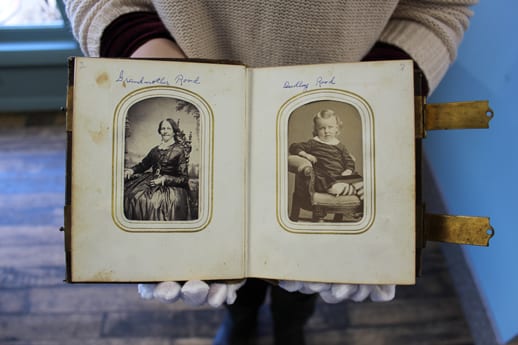 A very delicate family album from the 1800’s
A very delicate family album from the 1800’s
The 1800s also saw the rise of scrapbooking as a social, scholarly, and consumer activity. Much like today’s social media, people used photo and friendship albums in the 1800s to express their ‘Likes’ and communicate with friends. Several companies saw an opportunity and started selling blank albums and supplies.
Cameras and paper grew cheaper in the 1900s, allowing more people to customize their own albums. As technology expanded to include consumer printers, digital cameras, and the internet, albums became a way for people to document and share their own lives in vivid color.
 A family scrapbook from 1912
A family scrapbook from 1912
The stories, knowledge, and history in these books are what makes them so valuable. They’re irreplaceable because each one is uniquely crafted by its creator. Unfortunately, without proper care, many of these precious memories could be lost forever.
Albums and Scrapbooks are Fragile and Getting Worse
Materials, handling, and environment all affect the affect the condition and shelf life of an album. Physical traits of these books and their contents can cause severe damage over time. The Library of Congress lists some common material problems. Many albums are affected by one or more of these features:
- Mostly low-grade paper that gets brittle, stained, and deteriorates quickly
- Modern plastics can be unstable and damaging
- Full albums can bulge and damage the binding
- Adhesives and tapes can damage the books and their contents
- 3D objects like pressed flowers might not fit between the pages
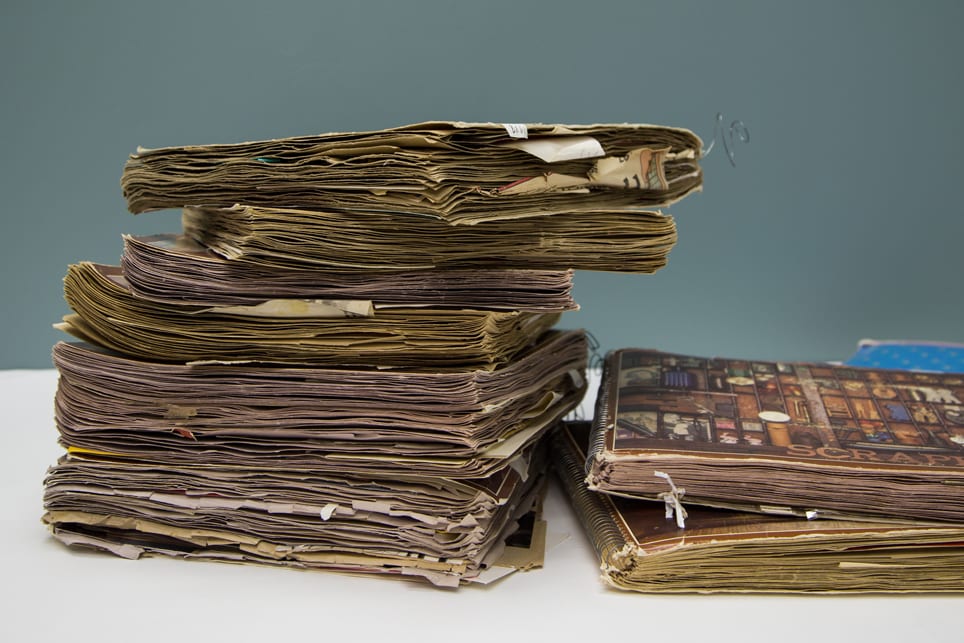 These scrapbooks are overflowing and the binding has suffered
These scrapbooks are overflowing and the binding has suffered
Improper handling poses another risk to photo albums and scrapbooks. Pages can rip if they’re turned with too much force, and the natural oils on your hands can stain the items you touch. Even careful handling can stain the pages and wear out the binding over time.
Environmental factors like light, temperature, humidity, and storage can also affect the lifespan of scrapbooks and photo albums.
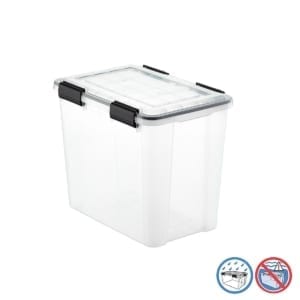
Proper storage and handling will improve shelf life, but again, these solutions aren’t permanent. Tracking and adjusting the climate takes time and diligence, and might not be a realistic approach.
To maximize the usable life of your physical albums, you could lock them in airtight, lightproof containers lined with acid-free paper and never touch them again. But albums and scrapbooks are meant to be shared and enjoyed.
4 Ways to Revive Old Scrapbooks and Albums
Just because physical albums won’t last forever doesn’t mean they should be left to rot in an attic or basement. Your story deserves better.
We know from our experience with the scanning and digital preservation of albums and scrapbooks that every album is one-of-a-kind, and we recommend four different options to bring your past into the present.

1. Individual scans – Remove each photo from the album, clean it, scan it, and put it back exactly where it was. This method works if you want the album’s contents kept in order, but aren’t concerned about scanning the original layout on every page. You can also keep the photos outside of the album stored in a separate bag or box to conserve space.
2. No-touch photography – Our white-glove technicians carefully handle every client’s materials, but we find that some items are just too fragile to scan. In these cases, photograph each album page in a no-touch studio to get a high-quality digital image of every page. Then you can either leave the full-page images intact, or crop each item on the page separately.
3. Full-page scans – Many people want to preserve the album’s original layout. The folks who made these albums deliberately placed items on each page in a specific way. We offer sharp, full-page view images of every page in an album or scrapbook and we recommend full-page scans for scrapbooks especially. This method lets you appreciate the album in the same way that its creator intended, and it also preserves any handwritten captions next to the photos and other items. These captions can also be stored in the file names or metadata of their respective images.
4. Stitching – Some albums are too large to capture a full page in just one scan. In these cases, we scan multiple sections of each page and then digitally stitch the segments together to make one large image. Then our team can either provide full-page scans, or crop each item one by one. This is a more advanced method that requires knowledge of photo software.
Enjoy Your Old Scrapbooks and Photo Albums Again
Albums and the items inside are priceless and irreplaceable. They’re also fragile, and they’ll only get worse over time. Don’t wait for flooding or fire to think about the memories you COULD have saved. It’s time to take action while your story’s still intact.
To work with a professional, you can utilize our album & scrapbook scanning service or an APPO member.
You can also invest in the equipment, like this scanner, to work on your albums yourself. We recommend this approach if your photos are easy to remove from the albums or your scrapbook is small enough to fit on an affordable scanner. A 12″ x 12″ scrapbook requires an oversized scanner and that will run you in the thousands!
By: Jens Peterson

